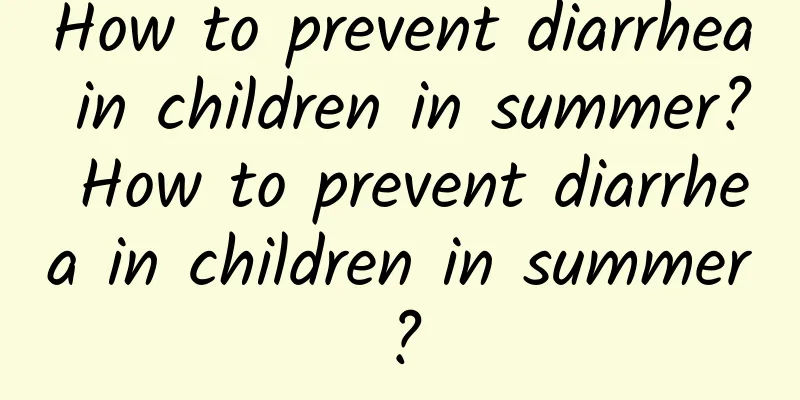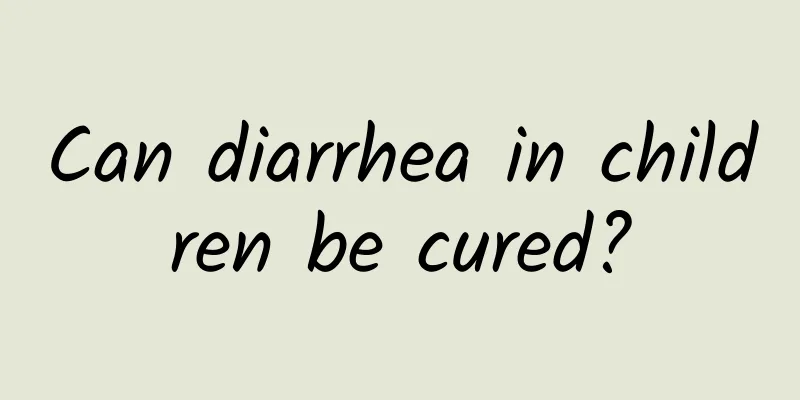What nursing points should parents master? What are the causes of diarrhea in children?

|
Diarrhea is a common disease in children. If not treated in time, it is likely to lead to complications such as indigestion. Below I will give a detailed introduction to the common causes of diarrhea in children. Parents should pay more attention to their children's health after studying the contents of this chapter. What are the causes of diarrhea in children? 1. Physiological diarrhea: When the nutritional content of breast milk exceeds the physiological needs and digestive function limits of children, diarrhea will occur in children. 2. Improper feeding can cause diarrhea, mostly in artificially fed babies. Due to irregular feeding, too much or too little feeding, or inappropriate food ingredients, such as feeding large amounts of starch or fat foods too early, suddenly changing food types or weaning, etc., children may suffer from diarrhea. 3. Some children are allergic or intolerant to milk or certain food ingredients (such as lactose deficiency), and may suffer from diarrhea after feeding. 4. Sudden changes in climate and cold abdomen increase intestinal motility; overheated weather reduces the secretion of digestive juices. Thirst and excessive feeding increase the burden on the digestive tract, all of which can easily induce diarrhea in children. 5. The digestive system of infants and young children is poorly developed, and the secretion of various digestive enzymes is less and their activity is lower. They have poor tolerance to food and cannot adapt to large changes in food quality and quantity. Because they grow and develop rapidly, they require relatively more nutrients, the digestive tract is burdened more, and they are often in a state of tension. They are prone to digestive dysfunction, which is also one of the causes of diarrhea in children. Nursing tips for children with diarrhea: 1. Record the frequency, amount and nature of the child's bowel movements, urine and vomiting. Bring stool samples with you to the doctor for examination and diagnosis. 2. Children with diarrhea are often prone to dehydration. In addition, due to diet control, they are prone to chills. If they have cold limbs and their body temperature does not rise, you can use a hot water bottle to keep warm. Be careful not to scald the child when using a hot water bottle. 3. Children with diarrhea have more frequent bowel movements, so diapers should be changed frequently. After each bowel movement, wash the buttocks with warm water (girls should wash from front to back), and then dry with a soft cloth. Tannic acid ointment or compound copper zinc sulfate ointment can be applied to prevent red buttocks. 4. Children with diarrhea may develop thrush due to the long-term use of antibiotics, which may cause oral mold growth. Therefore, they should be fed with more boiled water to clean the mouth. In case of vomiting, cotton can be used to wipe the mouth with warm boiled water. If thrush has already occurred, 1% gentian violet solution can be applied to the affected area. 5. Severe diarrhea, or mild diarrhea that persists but does not heal, the child gradually loses weight, and the systemic symptoms worsen, should go to the hospital for treatment in time. |
Recommend
How to cure polio?
In life, there are some children who are born wit...
Can eczema in children cause fever? Generally not
Children with eczema generally do not cause fever...
Introduction to the latest progress in the treatment of Kawasaki disease
Kawasaki disease is a very common disease in life...
What is the normal range of neonatal jaundice? What causes high neonatal jaundice?
Neonatal jaundice refers to a disease characteriz...
What are the complications of acute laryngitis in children?
What complications can acute laryngitis in childr...
What medicine is better for heart-kidney disharmony? How to use medicine for heart-kidney disharmony?
Traditional Chinese medicine believes that the fi...
How to care for children with pneumonia in winter? Two key points to determine infant pneumonia
Winter is very harmful to babies, especially chil...
Scientific examination of diarrhea in children
What are the examination methods for pediatric di...
How to effectively prevent pneumonia in children
Neonatal pneumonia is a common disease, so it is ...
Research has found that electric mosquito coils are liver toxic? So can electric mosquito coils still be used? This article will tell you
On summer nights, the breeze brings coolness, but...
Is there a difference between pneumonia and pneumonia in children?
Is there a difference between childhood pneumonia...
Causes and treatment of pseudohypertrophic muscular dystrophy
Duchenne muscular dystrophy is caused by a gene d...
How to treat pathological jaundice? The correct treatment method for pathological jaundice
Jaundice is a common symptom in life. Newborns wi...
Specific tests for diarrhea in children
In the process of raising children, we all have s...
Issues that require attention in the treatment of ADHD
ADHD is a common behavioral disorder in children....









